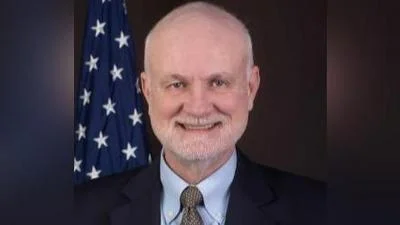John Taylor, Professor of Economics at Stanford University and developer of the "Taylor Rule" for setting interest rates | Stanford University
John Taylor, Professor of Economics at Stanford University and developer of the "Taylor Rule" for setting interest rates | Stanford University
A series of research papers by Stanford Medicine researchers and international collaborators has provided new insights into the role of small DNA circles, known as ecDNA (extrachromosomal DNA), in driving various types of human cancers. Published in Nature on November 6, the studies highlight the prevalence and prognostic impact of these circles in nearly 15,000 human cancers. They also introduce a novel mode of inheritance that challenges a fundamental law of genetics and describe an anti-cancer therapy targeting these circles currently in clinical trials.
The research team, called eDyNAmiC, is led by Professor Paul Mischel from Stanford University. In 2022, Mischel's team received a $25 million grant from the Cancer Grand Challenges initiative to further study these DNA circles. The initiative is supported by Cancer Research U.K. and the National Cancer Institute.
“We’re in the midst of a completely new understanding of a common and aggressive mechanism that drives cancer,” said Mischel, who holds the Fortinet Founders Professorship at Stanford Medicine’s Sarafan ChEM-H.
Mischel co-authored all three papers with Howard Chang, professor of dermatology and genetics at Stanford. The studies reveal that ecDNAs often contain oncogenes, which can enhance cancer cell growth and help evade immune responses. Previously thought to be present in only about 2% of tumors, recent findings show they are more widespread.
One paper analyzed nearly 15,000 cancer patients across 39 tumor types and found that ecDNA was present in 17.1% of tumors. It noted increased prevalence after treatments like chemotherapy and linked ecDNA presence to metastasis and lower survival rates.
“This study is a tour de force of data gathering and analysis,” said Mischel.
The second paper focused on how ecDNAs are inherited during cell division. Unlike chromosomes, their transcription continues unabated during division, allowing them to segregate together into daughter cells.
“This upends Gregor Mendel’s rule of independent assortment,” said Mischel.
Chang added: “Daughter cells that repeatedly inherit particularly advantageous combinations of ecDNA circles should be rare if the segregation is truly random.”
The third paper explored therapeutic approaches targeting these circles by inhibiting CHK1 protein activity, showing promise in laboratory settings and early-phase clinical trials for certain cancers with multiple oncogene copies on ecDNAs.
“This turns the table on these cancer cells,” Chang stated.
Mischel emphasized collaboration: “These papers represent what can happen when researchers from many different labs come together with a common goal.”
###




 Alerts Sign-up
Alerts Sign-up